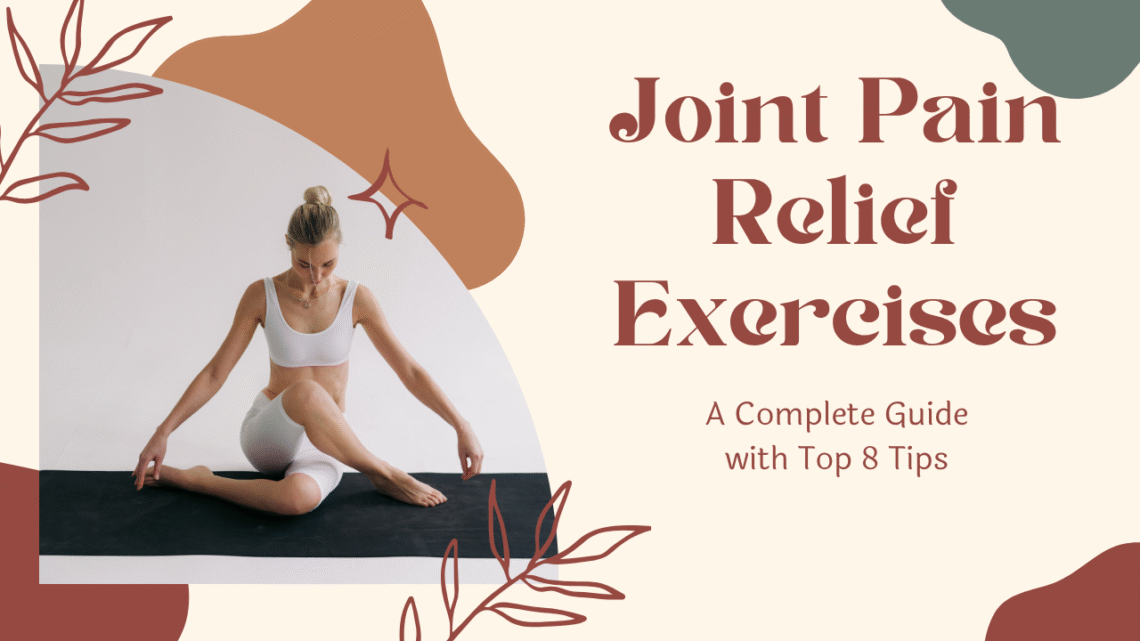Joint Pain Relief Exercises can be frustrating, limiting, and even debilitating. Whether it’s caused by arthritis, injury, aging, or sedentary lifestyle, the discomfort can impact every part of your day—from getting out of bed to enjoying a walk. While medication and medical treatments can help, incorporating joint pain relief exercises into your daily routine is one of the most effective, natural ways to reduce pain, improve mobility, and enhance quality of life.
If you’re struggling with joint pain, you’re not alone—and the good news is, movement can be one of your most powerful tools for relief. In this comprehensive guide, we explore how joint pain relief exercises can ease discomfort, improve mobility, and support long-term joint health. Joint pain can result from various conditions such as arthritis, injury, or a sedentary lifestyle. While medication and rest can help in the short term, the most effective long-term solution often involves gentle, targeted exercises.
Engaging in the right types of movement can reduce stiffness, increase blood flow to affected joints, and strengthen the surrounding muscles—providing better support and reducing strain. From low-impact aerobics and stretching to strength training and yoga, each type of joint pain relief exercise plays a unique role in your recovery and maintenance routine.
This guide walks you through the top 8 expert-recommended exercises that are safe, effective, and easy to incorporate into daily life. You’ll also learn valuable tips for avoiding injury, using heat and cold therapy, and practicing good posture during workouts. With consistency and care, these simple strategies can transform your joint health and help you reclaim an active, pain-free lifestyle.
Understanding Joint Pain: What Causes It?
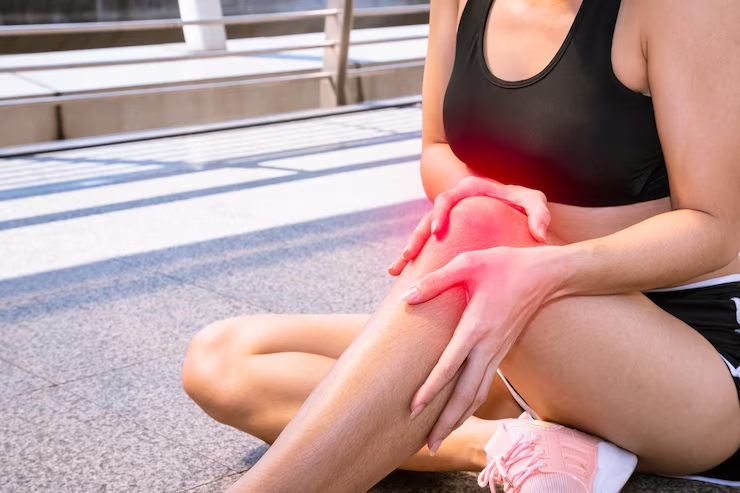
Joint pain refers to discomfort, stiffness, or inflammation occurring in any joint—the place where two or more bones come together. This pain can range from a minor nuisance to a debilitating condition that significantly impacts daily life. People may experience joint pain as a dull ache, sharp twinge, or even burning sensation, often accompanied by swelling or a reduced range of motion. The most common areas affected include the knees, hips, shoulders, elbows, and fingers.
Common causes of joint pain include osteoarthritis, rheumatoid arthritis, bursitis, tendonitis, injuries, or the natural aging process. Sedentary lifestyles, obesity, repetitive motion, and overuse can further aggravate the joints. While medications and therapies may provide relief, one of the most effective long-term strategies to manage and reduce joint pain is incorporating joint pain relief exercises into your daily routine.
These exercises help by strengthening the muscles around the joints, improving flexibility, boosting circulation, and reducing stiffness. When done correctly and consistently, joint pain relief exercises can prevent further damage, support joint function, and enhance overall mobility. Whether you’re dealing with chronic pain or recovering from an injury, understanding the root cause of joint discomfort and choosing the right movement strategy is key to long-term relief and healthier joints.
- Osteoarthritis – age-related wear and tear of cartilage.
- Rheumatoid arthritis – an autoimmune condition causing inflammation.
- Bursitis or Tendonitis – inflammation of the soft tissues surrounding joints.
- Injury or Overuse – repetitive strain or trauma.
- Sedentary lifestyle – lack of movement weakens muscles and joints.
While rest may seem helpful, long periods of inactivity actually worsen joint pain. Movement and targeted exercises are key to keeping joints healthy.
Why Exercise Helps with Joint Pain
Movement is medicine. When done correctly, joint pain relief exercises can:
- Increase blood flow to joint areas
- Lubricate joints by stimulating synovial fluid production
- Strengthen muscles around joints for better support
- Improve range of motion
- Reduce stiffness and inflammation
- Enhance posture and balance
The right exercises don’t just reduce pain—they build resilience and prevent future flare-ups.
Top 8 Tips and Exercises for Joint Pain Relief
Let’s explore the most effective strategies and exercises that support joint health and ease pain.
1. Low-Impact Aerobic Exercises: Keep It Moving Without Straining
Why it works: Low-impact cardio activities such as walking, cycling, and swimming are excellent joint pain relief exercises that promote movement without placing excessive strain on your joints. These forms of exercise gently increase your heart rate while keeping the stress on your knees, hips, ankles, and spine to a minimum—making them ideal for individuals managing arthritis, injury recovery, or general joint discomfort.
One of the biggest benefits of low-impact cardio is enhanced circulation, which delivers oxygen and nutrients to joint tissues and helps flush out inflammation-causing toxins. Regular movement also keeps your joints lubricated, improving flexibility and reducing stiffness. Over time, consistent low-impact activity supports muscle tone and balance, which are crucial for stabilizing and protecting vulnerable joints.
Maintaining a healthy weight is another key factor in joint health. Excess body weight places additional pressure on load-bearing joints like the knees, hips, and ankles, accelerating wear and increasing pain. Low-impact cardio helps burn calories and manage weight safely, which significantly eases joint stress.
For those seeking sustainable and gentle joint pain relief exercises, incorporating brisk walking, stationary biking, or swimming into a weekly fitness routine can make a meaningful difference in pain management, mobility, and long-term joint function.
Best exercises: (Joint Pain Relief Exercises)
- Brisk walking for 20–30 minutes daily
- Stationary or outdoor cycling
- Swimming or water aerobics (excellent for arthritis)
Tip: Start slow and increase intensity gradually. Use supportive shoes for walking and proper gear for cycling.
2. Stretching: Regain Flexibility and Prevent Stiffness
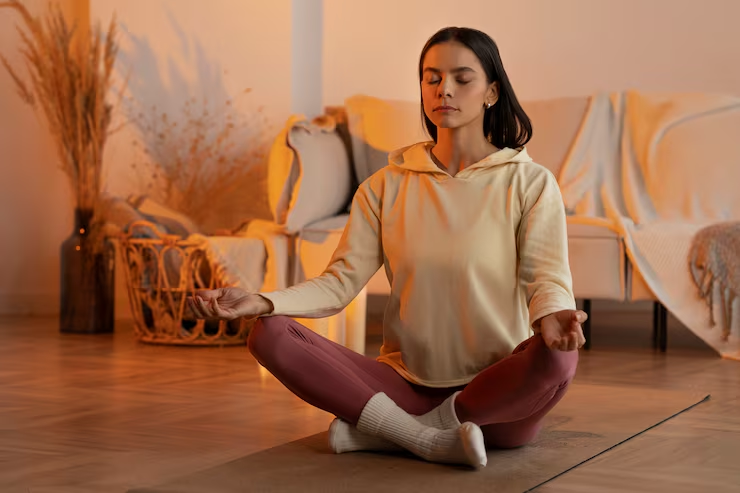
Gentle stretching is one of the most effective and accessible joint pain relief exercises available. Stretching targets the muscles and tendons surrounding your joints, helping to reduce tightness and improve flexibility. When your muscles are less tense, there is less pressure on the joints, which can significantly reduce pain and stiffness.
One of the main reasons stretching works so well is because it improves circulation. As you stretch, blood flow increases to the targeted muscles and joints, delivering oxygen and essential nutrients while removing waste products that contribute to inflammation and discomfort. This improved blood flow can help reduce swelling and promote joint recovery.
Stretching also prepares the body for other forms of movement. Before engaging in walking, strength training, or other joint pain relief exercises, stretching acts as a gentle warm-up, reducing the risk of injury and enhancing performance. It creates a smoother range of motion, making everyday activities like bending, climbing stairs, or reaching more comfortable and safe.
Simple stretches like neck rolls, hamstring stretches, shoulder rolls, and gentle yoga poses are easy to do at home and require little to no equipment. Practicing them regularly can lead to long-term improvements in joint health, mobility, and pain reduction..
Best stretches:
- Hamstring stretch (seated or lying down)
- Quad stretch (standing, holding ankle to buttock)
- Shoulder circles and neck rolls
- Cat-Cow stretch for the spine
Tip: Hold each stretch for 20–30 seconds, breathe deeply, and never bounce during a stretch.
3. Strength Training: Build Support Around Joints
Strength training is one of the most important components of effective joint pain relief exercises. It works by building and maintaining strong muscles that support and stabilize your joints. When the muscles around your joints are weak, more stress and pressure are placed directly on the joint itself—leading to discomfort, inflammation, and potential long-term damage.
By strengthening key muscle groups, such as the quadriceps, hamstrings, glutes, core, and upper body, you help create a protective cushion around vulnerable joints like the knees, hips, and shoulders. This added muscle support not only reduces current joint pain but also helps prevent future injuries and degeneration.
Best exercises:
- Wall sits and leg lifts (for knees)
- Resistance band rows (for shoulders and upper back)
- Bicep curls and tricep extensions (for elbows and wrists)
Tip: Use light weights or resistance bands and aim for 2–3 sessions per week. Focus on controlled, pain-free motion.
4. Range-of-Motion Exercises: Stay Mobile
Why it works: These exercises improve flexibility and help joints move through their full range, reducing stiffness and pain.
Best moves:
- Wrist and ankle circles
- Shoulder shrugs and rolls
- Finger stretches
- Heel-to-toe rocking
Tip: Perform these daily, especially after long periods of sitting or in the morning when stiffness is common.
5. Yoga and Tai Chi: Mindful Movement for Joint Health
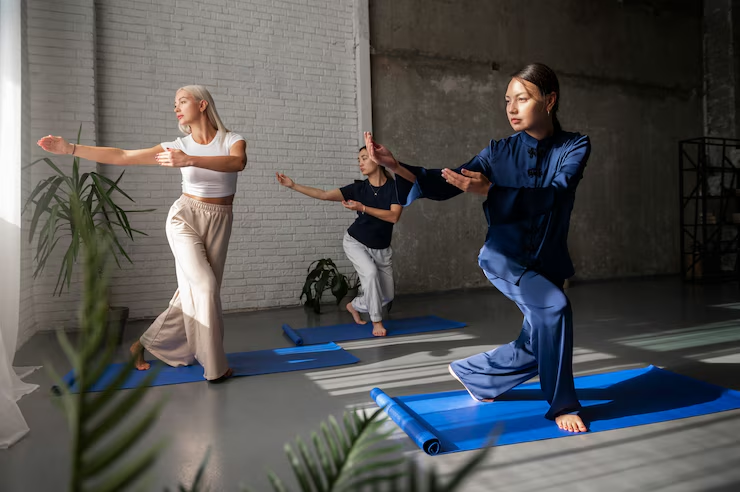
Why it works: These ancient practices combine gentle movement, balance, breathwork, and meditation. They reduce stress (which can increase inflammation) and improve flexibility, balance, and coordination.
Recommended poses: (Joint Pain Relief Exercises)
- Child’s Pose and Cat-Cow (gentle spinal movement)
- Warrior II and Triangle Pose (lower body strength)
- Tai Chi forms for fluid, joint-friendly sequences
Tip: Join a beginner’s class or follow a certified video. Avoid poses that strain joints.
6. Use Heat and Cold Therapy Before and After Exercise
Why it works: Applying heat before activity relaxes muscles and lubricates joints, making movement easier. Cold packs reduce inflammation and numb pain post-exercise.
How to use:
- Warm compress or hot shower before workout
- Ice pack wrapped in cloth for 10–15 minutes after exercise
Tip: Always protect your skin—never apply ice or heat directly. Listen to your body’s response.
7. Maintain Proper Posture During Exercises
Why it matters: Poor posture can strain joints, especially the spine, hips, and knees. Alignment helps distribute weight evenly and prevent additional stress.
Tips for good posture:
- Engage your core during workouts
- Keep shoulders relaxed and down
- Avoid locking knees or elbows
- Use mirrors or a trainer to correct form
Bonus: Good posture improves breathing and balance, reducing risk of falls or injury.
8. Consistency Over Intensity: Make It a Habit
Why it matters: Consistent movement, even in small amounts, is more effective than occasional intense sessions. Overdoing it can worsen joint pain.
How to stay consistent:
- Create a weekly schedule of 20–30 min sessions
- Choose activities you enjoy (swimming, yoga, walking)
- Keep a journal to track pain, progress, and mood
Tip: If you miss a day, don’t stress—just pick back up tomorrow. The goal is lifelong joint health.
Joint-Specific Exercise Tips
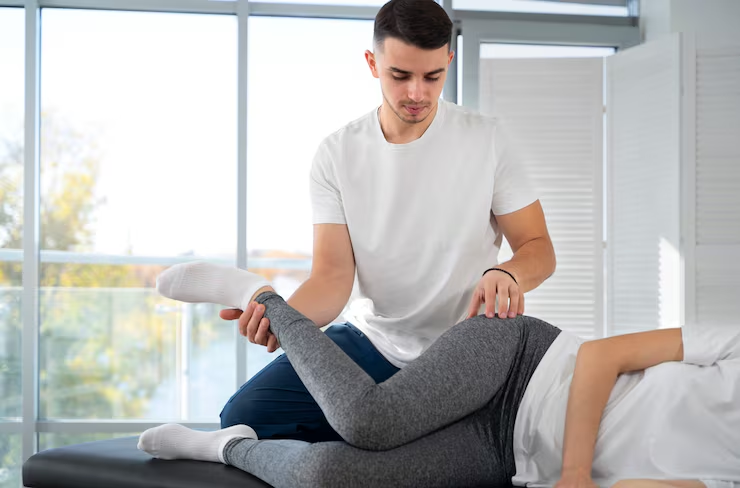
Here are special pointers based on which joint is causing pain:
Knee Pain
- Avoid deep squats or lunges
- Focus on strengthening quads and hamstrings
- Try seated leg extensions and step-ups
Hip Pain
- Gentle hip bridges and clamshells help stabilize hips
- Stretch hip flexors and IT bands
Shoulder Pain
- Avoid overhead lifting if it hurts
- Try pendulum swings, wall walks, and resistance band pulls
Wrist or Hand Pain
- Use stress balls or hand grippers
- Perform finger and wrist stretches regularly
When to Stop or Modify an Exercise
While engaging in joint pain relief exercises can significantly improve mobility and reduce discomfort, it’s crucial to listen closely to your body’s signals. Exercise should not lead to harm. If you experience sharp or stabbing pain during a movement, stop immediately—this could indicate joint strain or tissue damage. Likewise, visible swelling, redness around a joint, or sensations like numbness or tingling are signs that something may be wrong. Pay close attention to any increased discomfort after performing certain joint pain relief exercises, as this could mean the exercise needs to be modified or avoided temporarily.
Instead of pushing through the pain, prioritize safe movement. Each person’s condition is different, so exercises that benefit one individual might not suit another. Consulting a healthcare provider, such as a physical therapist, can provide customized guidance. These professionals can assess your condition and recommend joint pain relief exercises that are effective yet gentle on sensitive joints.
Remember, the goal of these exercises is to reduce joint stiffness, enhance flexibility, and support long-term joint health—not cause further injury. With the right approach, you can build strength and resilience while staying pain-free and active. Always progress gradually and stay mindful of your body’s limits.
Supporting Lifestyle Habits
Exercise works best when paired with healthy habits:
- Anti-inflammatory diet – Eat more fruits, vegetables, omega-3s, and whole grains
- Hydration – Keeps joints lubricated
- Weight management – Reduces load on joints
- Stress reduction – Lowers cortisol and inflammation
- Sleep – Helps repair and recover
Conclusion: Take Control of Your Joint Health
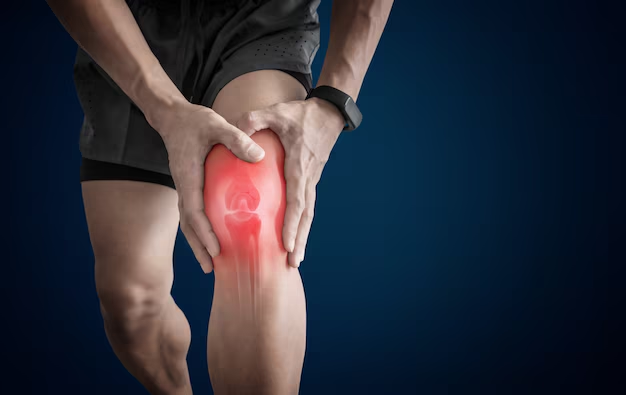
You don’t have to live in pain. While joint discomfort can be frustrating and limiting, there are effective ways to take control of your mobility and well-being. By embracing a balanced lifestyle that includes joint pain relief exercises, healthy daily habits, and consistent self-care, you can significantly reduce stiffness, improve flexibility, and regain confidence in your movements.
Joint pain relief exercises are specifically designed to support your joints by strengthening surrounding muscles, enhancing flexibility, and improving circulation. When combined with proper hydration, an anti-inflammatory diet, and adequate rest, these exercises create a powerful, holistic approach to managing pain and preventing further joint damage.
Even small steps—like stretching each morning, incorporating low-impact cardio such as walking or swimming, or practicing posture correction—can bring noticeable improvements. The key is to stay consistent and listen to your body’s signals.
With patience and dedication, you’ll notice better range of motion, reduced inflammation, and less day-to-day discomfort. Rather than avoiding movement out of fear, movement itself becomes your tool for recovery and resilience.
Empower yourself through the right joint pain relief exercises and habits. Life is meant to be lived in motion—freely, comfortably, and without unnecessary pain.
Start small, stay consistent, and celebrate every step toward better mobility and comfort.
✅ Quick Recap: Top 8 Tips for Joint Pain Relief Exercises
- Low-Impact Aerobics – Keep joints mobile and burn calories
- Stretching Daily – Improve flexibility and reduce stiffness
- Strength Training – Support joints with stronger muscles
- Range-of-Motion Drills – Restore movement and reduce pain
- Yoga/Tai Chi – Build balance, control, and mental calm
- Heat/Cold Therapy – Prepare joints and soothe inflammation
- Good Posture – Reduce joint strain during movement
- Consistency – Regular gentle exercise beats occasional intensity
Here are 5 frequently asked questions (FAQs) about joint pain relief exercises, answered clearly and helpfully:
FAQ
1. What are the best exercises for joint pain relief?
Answer: The best joint pain relief exercises include low-impact activities like walking, swimming, and cycling, which improve flexibility and circulation. Gentle stretching and strengthening exercises, such as yoga, resistance band training, and bodyweight movements (like squats or wall push-ups), also help support the joints and reduce stiffness.
2. How often should I do joint pain relief exercises?
Answer: Ideally, aim for at least 3 to 5 days a week. Start slowly—about 15 to 30 minutes per session—and gradually increase duration and intensity. Consistency is key to gaining strength and mobility without overloading your joints.
3. Can joint pain relief exercises worsen my condition?
Answer: If done incorrectly or too intensely, yes. Always use proper form and listen to your body. Avoid high-impact or jerky movements. If you experience sharp or worsening pain, stop immediately and consult a healthcare provider or physical therapist.
4. Are these exercises safe for arthritis or elderly individuals?
Answer: Yes. Most joint pain relief exercises are safe and highly beneficial for people with arthritis or seniors. Low-impact routines improve joint health, mobility, and balance—key for reducing falls and preserving independence.
5. Do I need special equipment for joint pain relief exercises?
Answer: Not necessarily. Most exercises can be done using your body weight, a chair, a resistance band, or light dumbbells. Swimming or water aerobics require access to a pool but are excellent for joint-friendly resistance.
